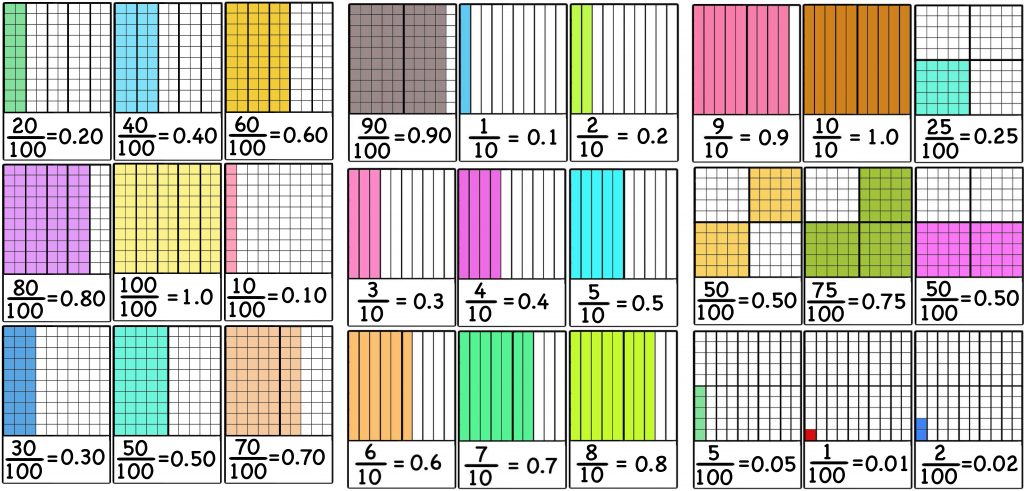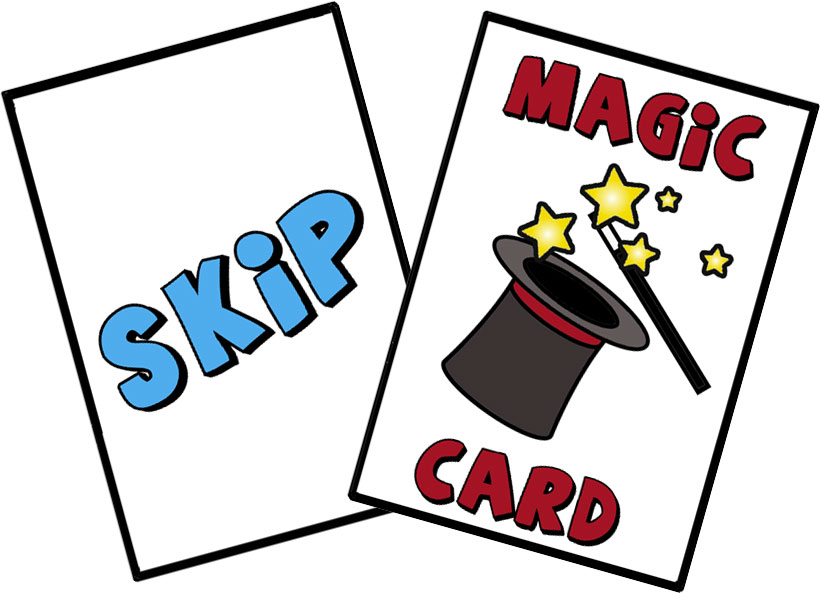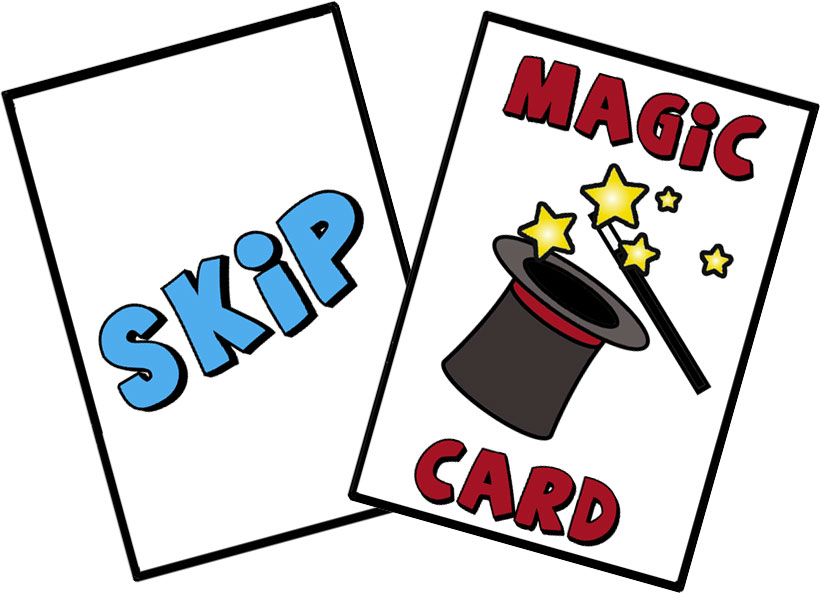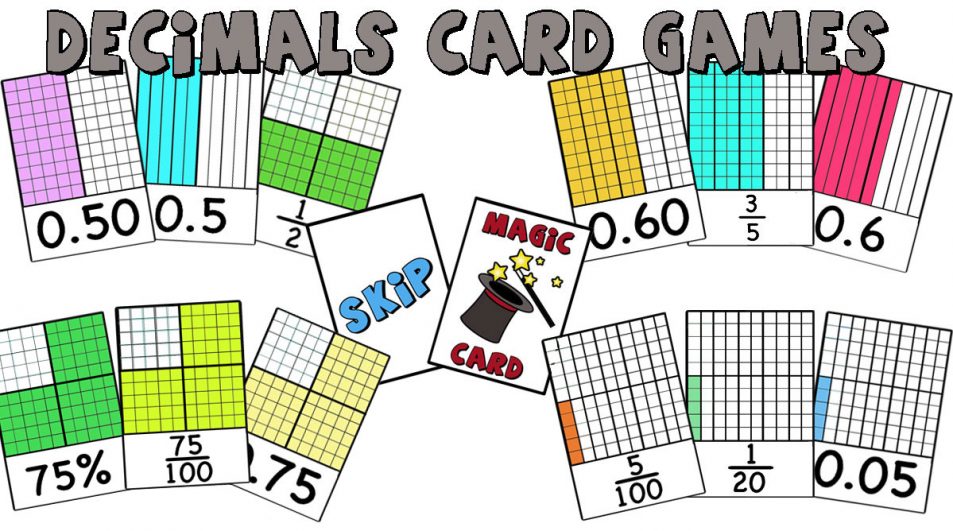Grades 3 and up
Decimal Fractions to Decimals
Decimals are a challenging concept and many students find it confusing. The key is to provide a lot of visuals and make sure students understand fractions. Decimals include a decimal point to represent a whole number plus a fraction of a whole number (tenths, hundredths, etc.). A decimal point is a point or dot used to separate the whole part of a number from the fractional part of a number. Once students understand fractions well then they will understand decimals and decimal place value as well.
We have created some decimal and fraction cards to be used as visuals and as game cards to help students practice decimals, decimal fractions, and decimal place value.
The first set of cards has the fraction and decimal and works great as a visual. For example, to explain the difference between 0.5 and 0.05 to find equivalent values and so on.

The second set is divided between cards with the fraction and cards with the decimal. You can use this set as visuals for different activities and for playing the two multiplayer games suggested. This set includes fractions where the denominators are not 10 or 100 like 1/5, 3/4, and so on. If you think your students are not ready for that yet you can take out those cards.

The third set includes the percents cards to match the decimal and decimal fractions cards above.

Multiplayer Games with the fraction and decimals cards.
Include the skip and magic cards for these games.
Game 1
Find a pair
Goal: Be the first player to discard all of their cards (like UNO)
Shuffle the cards and deal 6 to each player. The players take turns.
The players study their hand and try to find (and play) one fraction and one decimal card that express the same value. For example 20/100=0.20, 20/100=0.2, 1/5=0.20, 1/5=0.2 and so on. When the players don’t have a pair they draw a card. If they have two or more pairs they can play them at a turn. The play pile is the discard pile that can be shuffled and added to the draw pile when it finishes.
The skip card can be played any time to make a player miss a turn. Make sure you play it before the player starts their turn.
The Magic card works like a joker card. It can be paired with any card to create and play a pair. It cannot be played by itself.

The game goes on until a player discards all their cards.
If your students are ready you can add the percent cards as well 0.20=20/100=2/10=20%
Game 2
Match it up
Goal: Be the first to discard all of your cards.
Shuffle the cards and deal 6 to each player. The players take turns.
The first player plays a card down. The next player must play a card with the equivalent fraction or decimal. For example 0.25=25/100=1/4 and so on. If the player doesn’t have an equivalent card they can play the skip card to skip their turn. They can also play the magic card which gives them the opportunity to change the card by playing another card from their hand. When a player doesn’t have a matching/equivalent card, a skip card, or a Magic card they must draw a card from the draw pile.

If your students are ready you can add the percent cards as well 0.20=20/100=2/10=20%
Game 3
First Four
Goal:Be the first player to collect 4 equivalent cards, example 0.20+0.2+20/100+2/10+20%
Don’t include the skip cards for this game. You can include the percent cards if your students are ready.
Shuffle the cards and deal 6 to each player. Turn the remaining deck face down as a draw pile. Turn the firs card face-up and keep it next to the draw pile. That is the play pile. The players take turns. At their turn they must pick a card and play a card. The card they play goes on top of the play pile. (face up) They can pick a card from the play pile or the draw pile. The magic card works like a joker, it can become one of the four cards that you need to collect to win.
Other Fractions to decimals cards activities/games
- Give a student, pair, or group a set of 8,10 or more cards which can be paired fraction=decimal. (1/10=0.10) Mix them up and ask them to sort the pairs.
- Do the previous activity this time the cards should be equivalent decimals. 0.30=0.3, 0.20=0.2 and so on.
- Play a memory game with the pairs fraction-decimal or decimal-decimal
- Place down 4 cards and ask the students to find the odd one out.
- Place two cards down and ask the students to put a greater, least card in the middle. (25/100>0.20, 0.3>0.25 comparing decimals)
- Use he cards to add and subtract decimals.
- Play a bingo game. Give each player a few cards and announce decimals or decimal fractions. Whoever has the card or an equivalent one shows it and puts it down. The first player to finish their cards wins. Make sure that you give examples of equivalents each time,and write the announces card and its equivalents on the board.
I recommend laminating the cards to last longer and to be easily cleaned. It’s a bit of work but they make a useful resource. I am sure you will find many ways to use them. please share your ideas with us. For the multiplayer games, you need to print the cards twice. You can also add the cards and create activities in google slides or use the task cards already made by Mathcurious.
Decimals, Decimal fractions, Percentages – print and digital

